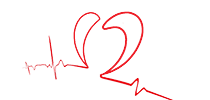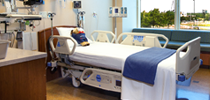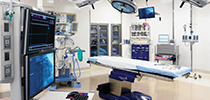OHH News
Posted on October 10th, 2023
If you are one of millions of Americans who are chronically short on sleep or living with a sleep disorder, you know how much lack of sleep can affect your life. Whether it’s trudging through each day or battling a struggling immune system, lack of sleep can significantly disrupt your daily life.
In fact, being chronically sleep deprived or having a sleep disorder can even impact your heart... Read More
Posted on October 1st, 2023
The heart is a muscle that uses a series of contractions to pump blood to and from the lungs and the rest of the body. These contractions are involuntary and are controlled and powered by the heart’s electrical system.
This conduction system stimulates each part of the heart to contract at just the right time to propel blood through the valves that separate each chamber of the heart. The... Read More
Posted on September 19th, 2023
Metabolic syndrome is a condition that occurs when a person has three or more of five risk factors that increase the likelihood of cardiovascular disease, diabetes, and stroke. Each of the five risk factors increases risk for... Read More
Posted on September 8th, 2023
In the medical world, research is the backbone of innovative treatment that saves lives. It builds on our previous knowledge and helps current and future patients receive high-quality treatment for their medical diagnoses. In the world of cardiac care, the OHH Research Foundation conducts groundbreaking research right here in Oklahoma that... Read More
Posted on September 1st, 2023
Atrial fibrillation is one of the most common heart rhythm disorders, and it affects millions of people daily. Not everyone who has atrial fibrillation, also known as AF or AFib, is aware of their condition. During September, we recognize National Atrial Fibrillation... Read More
Posted on August 29th, 2023
For Immediate Release:
August 29, 2023
OKLAHOMA CITY - Forbes magazine lists Oklahoma Heart Hospital as one of the top five Oklahoma employers in its annual America’s Best-in-State Employers for the second consecutive year. Oklahoma Heart Hospital was ranked 3rd in the survey of Oklahoma... Read More
Posted on August 21st, 2023
Cardiac patient caregivers play an important role in recovery after a heart attack or heart surgery or when living with a chronic heart condition. Too often caregivers can feel overwhelmed or isolated in their role. Finding support networks offered through a hospital or connecting with other cardiac patient caregivers in other ways can be extremely beneficial.
If you are new to caregiving,... Read More
Posted on August 10th, 2023
When the heart beats, it makes a sound described as a “lupp-dupp” sound when a doctor listens to the heart with a stethoscope. But sometimes doctors hear an extra, abnormal sound as well, which is called a murmur. The typical “lupp-dupp” sound of a heartbeat corresponds to the closing of valves in the heart. A murmur is the sound of blood flowing through the heart, which makes a swooshing noise.... Read More
Posted on August 1st, 2023
Implantable cardiac devices are used to monitor and treat heart rhythm disorders. The most well-known implantable device is the pacemaker, but there are several other types of devices that may be used depending on the patient’s symptoms or diagnosis.
Pacemaker
Pacemakers work to keep the... Read More
Posted on July 21st, 2023
If you or a loved one has recently had a heart attack, you may be wondering what happens next in terms of recovering from a heart attack.
Because heart attacks differ in their severity and impact, the recovery process looks different for every patient, and full recovery could take... Read More














